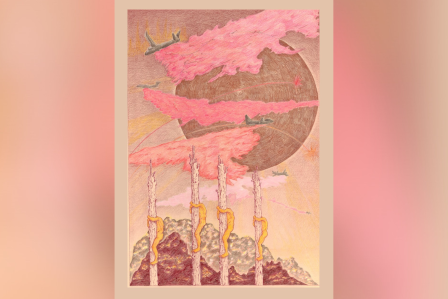12 - 5 p.m. PST
Stan State Art Space is thrilled to present exhibition They were a forest of giant oaks by Martin Azevedo from August 27-October 25, 2025. An opening reception will take place Thursday, October 16, at 6:00 p.m.
Marty Azevedo’s prints and drawings investigate themes of symbolism, archetypes, masculinity, power, narrative, and allegory. Born and raised in Hanford, California, he earned his BA in Art from California State University, Chico in 2009, and his MFA from The Ohio State University in 2011.
Azevedo’s work has been exhibited both nationally and internationally and is held in several notable permanent collections, including the Spencer Collection at the New York Public Library, the Jules Heller Print Study Room at the Arizona State University Art Museum, The Block Museum of Art at Northwestern University, the Artist Printmaker/Photographer Research Collection at the Texas Tech University Museum, and the Prints & Photographs Division at the Library of Congress.
He continues his studio practice while serving as Professor of Printmaking in the Department of Art at California State University, Stanislaus in Turlock, California.
They were a forest of giant oaks centers on relief printmaking and drawing as the primary modes of image production. Historically, printmaking has played a significant role in the spread of information and ideas. Since the invention of the Gutenberg press, it allowed for the affordable reproduction of texts and images, contributing to the growth of mass communication and cultural exchange. The historical importance of printmaking cannot be ignored as an art form intended to promote the discussion of ideas and bring about social change.
In this body of work, Azevedo uses printmaking and drawing to explore the complex relationship between humans and the natural world. This body of work is a visual response to the impacts of the changes he observes in the environment and in his immediate surroundings. These prints and drawings reflect on mans need for power and control over the natural world and his intentional and unintentional manipulation of landscapes and nature often to his own detriment. The work invites viewers to consider the lasting impact of these interventions and our place within the natural systems we so often seek to dominate.
Caption information: Burn for Distinction-Colored Pencil, 18” x 26”, 2024
